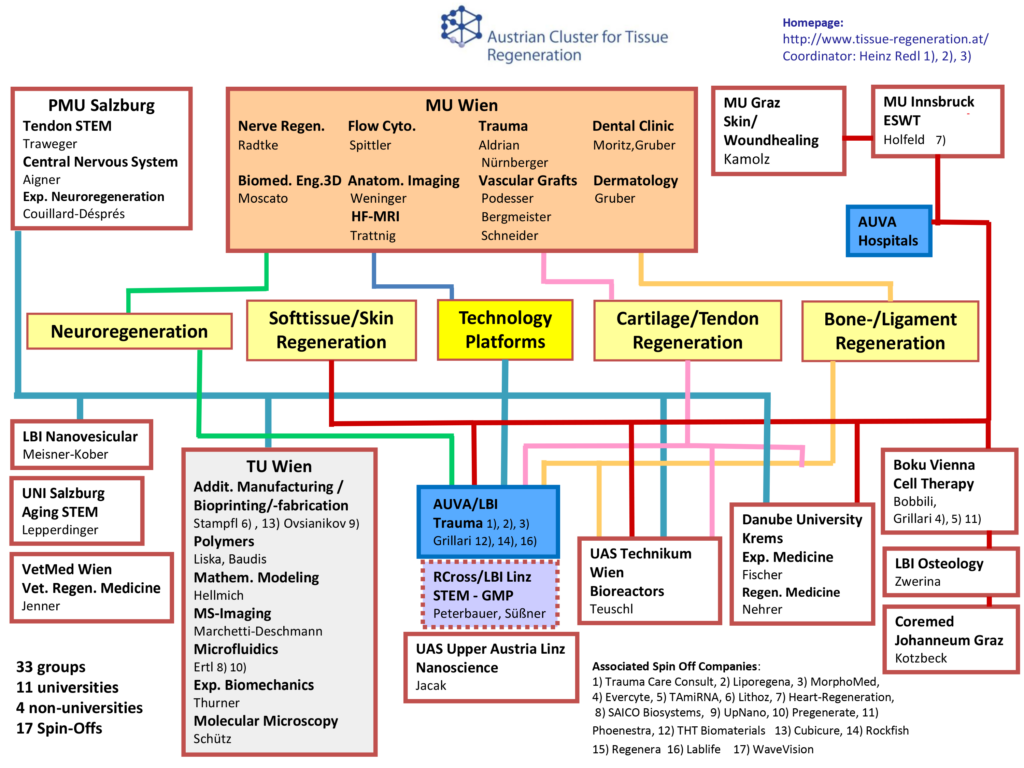Regeneration after trauma or injury is a fascinating and complex process. Some species are more capable of regenerating different body parts, tissues or organs while others possess only very limited regenerative abilities. Hydra for example, a freshwater polyp, can regenerate its entire body. Polyps are the early stage of what is commonly known as a jellyfish. After injuries, Hydra can rearrange its existing tissue which leads to a full regeneration of the lost parts. We humans in contrast can only dream about regenerating whole body parts. Tissues or organs can to a certain extend be regenerated, but mammals and thus humans have bad regenerative capabilities compared to other animal groups. What is biologically possible and what can be supported by engineered materials is part of many research projects all around the world.

In December 2006, the Austrian Cluster for Tissue Regeneration was founded to pool and further develop expertise on tissue regeneration throughout different scientific institutions in Austria. Founded in part by the Ludwig Boltzmann Institute for Traumatology, the Research Center in cooperation with AUVA, and research groups from the Medical University of Vienna, the University Dental Clinic and the Red Cross of Upper Austria, the Cluster established a broad network of know-how. The objective is to better understand soft tissue, cartilage, tendons, ligaments, bone and neuro regeneration and thereby enhance therapy through new and improved treatment methods. Research assignments arise from treatment necessities and proven benefits to patients. Over the following years additional know-how was brought to the Cluster such as 3D printing with photopolymers, cell sorting and immortalization as well as simulation in silico, thus extending its list of 33 groups from fifteen leading scientific institutions by 2025 (one more joining later in 2025). Since 2006 the Cluster is coordinated by Heinz Redl (LBI Trauma).
The Cluster is no separate legal entity, has no budget, but a contract among members which support exchange of materials, joint usage of lab equipment and staff. Such interactions are performed under confidentiality as the basis for open exchange. Cluster members meet at least once/year for scientific update and the Board meeting. The Cluster is supported by the Austrian Society for Tissue Regeneration in different aspects. An annual Cluster meeting is organized by different member groups on a rotational basis.
Through the establishment of the Cluster, clinical experts for bone and joint regeneration, for soft-tissue as well as neuro regeneration and specialists in imaging techniques are woven into one collective research fabric. The interdisciplinary teams include clinicians, biochemists, engineers, chemists, biophysicists, molecular biologists, biotechnologists, electronic technicians and veterinarians and their assistants.